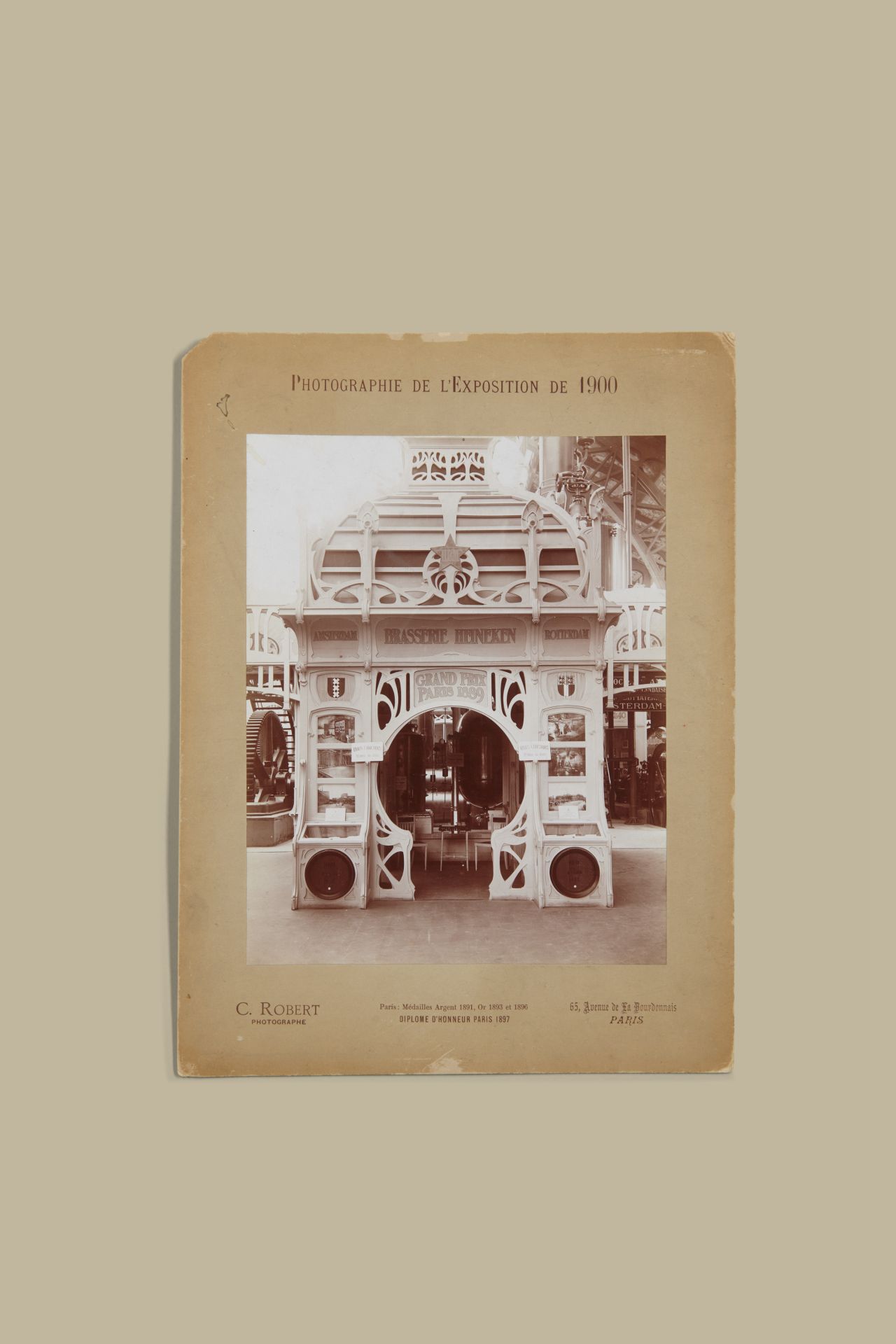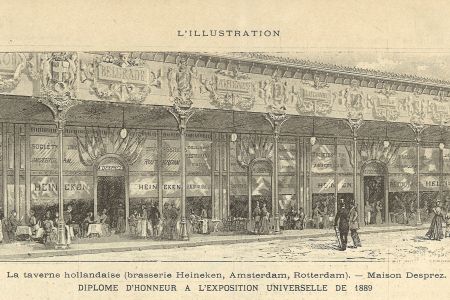INFO
C.A. Robert
The Heineken tasting bar at the Exposition Universelle in Paris
1900
black-and-white photograph mounted on cardboard
h 39.5 x w 29.5 cm

It’s raining awards
Check it out! The label of a bottle of Heineken still features four historic dates from the 19th century. In 1875, 1883 and 1889, Gerard Adriaan Heineken’s beer won awards for its outstanding quality. In 1900 Heineken himself was a member of the jury at the Exposition Universelle in Paris.
Gerard Adriaan Heineken won the first award for his bottom-fermenting ‘Bavarian beer’ in 1875: a gold medal at the Exposition Internationale des Industries Maritimes et Fluviales in Paris. That award signalled Heineken’s entry into the French market. At the International Colonial and Export Exhibition in his home city of Amsterdam, Heineken won the highest distinction, the ‘Certificate of Honour.’
Clear Heineken
Business was booming. Heineken’s beer flowed into the glasses of distinguished ladies and gentlemen in countless Amsterdam and Parisian grand cafés. The clear pilsner was truly an elite drink, very different from the cloudy, high-fermentation working-class beer that Heineken started out with in De Hooiberg Brewer y. Heineken even managed to sign a contract with the famous nightclub Folie-Bergères for 2000 hectoliters (1 million glasses of beer!) a year.
Tasting Bar and Taverne Hollandaise
And then, in 1889, Heineken appeared at the Exposition Universelle in Paris. Here in the photo you see a little bar where visitors could sample Heineken beer. But that’s not all: the Dutch brewer had a fully-fledged café-restaurant built on the Champs de Mars. The magazine l’Illustration reported on this impressive Taverne Hollandaise (‘Dutch Tavern ‘) by architect Edouard Niermans, later co-designer of the Moulin Rouge. The facade consists of a full gallery, below which is an elongated terrace with stylish ladies and gentlemen. The arched entrances have halos as decoration. Above it is a row of coats of arms and nameplates of European cities: Monaco, Belgrade, Athens...
Nothing but Heineken
The glowing article reported that the Parisian boulevard cafés ‘serve nothing but Heineken’ and that the exhibition public ‘consumed vast amounts.’ This led the jury to honour Mr Heineken with a diplôme d’honneur of the Grand Prix . There were six more foreign brewers, including Carlsberg, and a Dutch gin distiller who won in the same class 73 (alcoholic beverages). Heineken, however, added the text ‘Grand Prix Paris 1889’ to its label as if it were the one and only first prize.
A-yeast
Yet the Grand Prix judges seem to have been particularly impressed by the new, pure yeast type in Dutch beer. This so-called A-yeast was developed in Heineken’s Rotterdam laboratory by the chemist Hartog Elion. That same A-yeast is still the hallmark of Heineken’s beer today.
When another World’s Fair was held in Paris in 1900 , Heineken was asked to sit on the jury of his own product class. This was a great honour, adding to the prestige of both his brewery and his beer brand. Unfortunately, the status of a Membre de Jury is ‘Hors Concours’ (out of competition). While Heineken may have been excluded from the competition, he nonetheless proudly listed the jury membership on his beer label from 1904.
